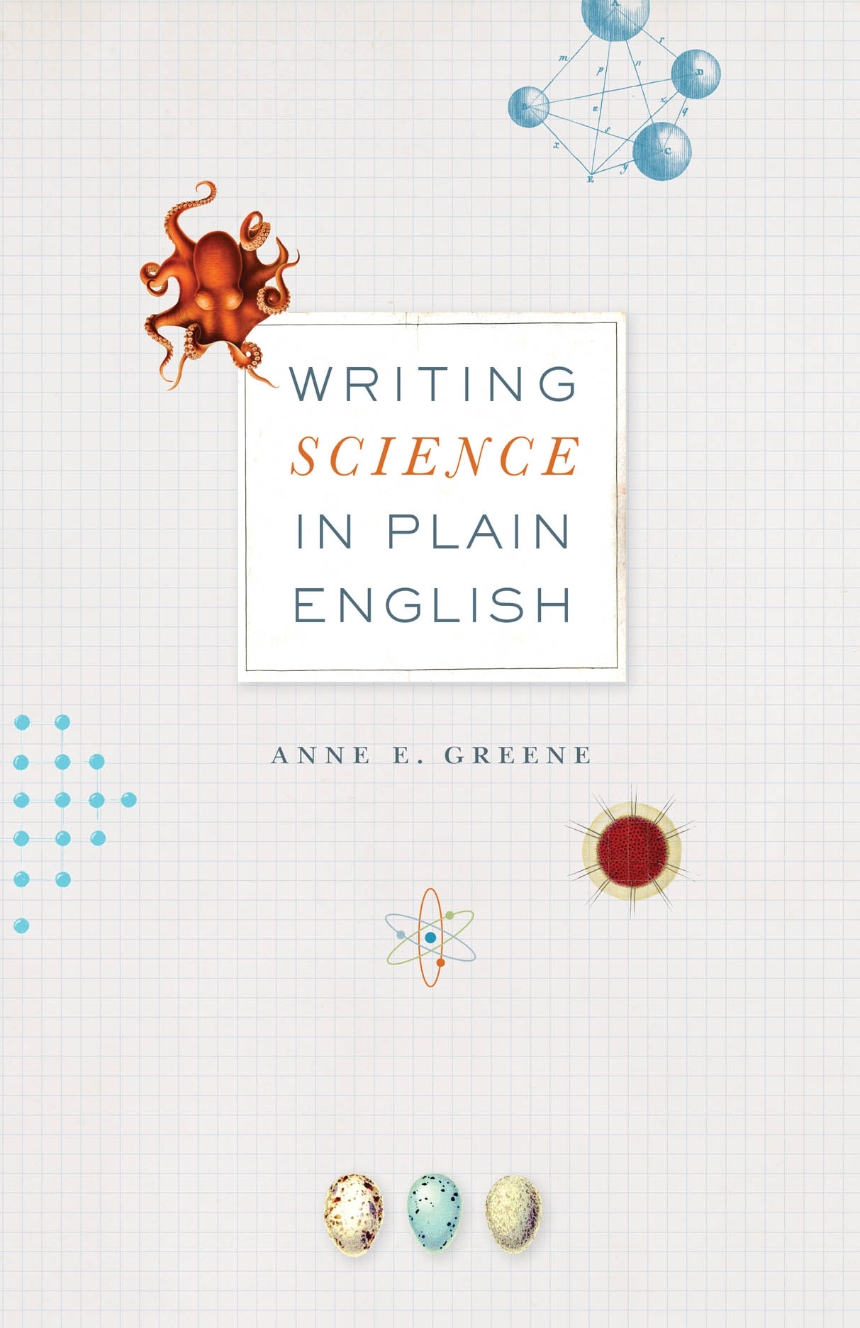Writing Science in Plain English
Scientific writing is often dry, wordy, and difficult to understand. But, as Anne E. Greene shows in Writing Science in Plain English,writers from all scientific disciplines can learn to produce clear, concise prose by mastering just a few simple principles.
This short, focused guide presents a dozen such principles based on what readers need in order to understand complex information, including concrete subjects, strong verbs, consistent terms, and organized paragraphs. The author, a biologist and an experienced teacher of scientific writing, illustrates each principle with real-life examples of both good and bad writing and shows how to revise bad writing to make it clearer and more concise. She ends each chapter with practice exercises so that readers can come away with new writing skills after just one sitting.
Writing Science in Plain English can help writers at all levels of their academic and professional careers—undergraduate students working on research reports, established scientists writing articles and grant proposals, or agency employees working to follow the Plain Writing Act. This essential resource is the perfect companion for all who seek to write science effectively.
136 pages | 5-1/2 x 8-1/2 | © 2013
Chicago Guides to Writing, Editing, and Publishing
Guides, Manuals, and Reference: Guides for Scientists
Reviews
Table of Contents
Acknowledgments
1 Why Write Science in Plain English?
2 Before You Write
Audience
Register
Tone
3 Tell a Story
Make Characters Subjects and Their Actions Verbs
Use Strong Verbs
Place Subjects and Verbs Close Together
4 Favor the Active Voice
Benefits of Active Voice
Proper Uses of Passive Voice
5 Choose Your Words with Care
Use Short Words Instead of Long Ones
Keep Terms the Same
Break Up Noun Strings
Rethink Technical Terms
6 Omit Needless Words
Redundancy
Metadiscourse and Transition Words
Affirmatives and Negatives
7 Old Information and New Information
Put Old Information at Beginnings of Sentences
Put New Information at Ends of Sentences
8 Make Lists Parallel
9 Vary the Length of Your Sentences
10 Design Your Paragraphs
Issue
Development
Conclusion
Point
11 Arrange Your Paragraphs
Chronological Order
General to Specific
Least Important to Most Important
Problem to Solution
Compare and Contrast
Transition Words Revisited
Appendix 1 Basic Writing Concepts
Appendix 2 Exercise Key
Index
